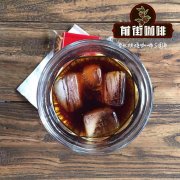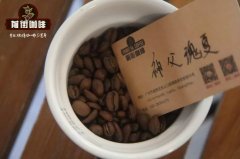The Origin of Musk Coffee simulated production of microbial fermentation Technology of Kopi Luwak

Coffee knowledge exchange More coffee bean information Please pay attention to coffee workshop (Weixin Official Accounts cafe_style)
The origin of Kopi Luwak
Civet coffee is derived from "civet", she naturally chooses the most ripe and sweetest fruit, so she will eat the ripe red coffee cherries, including coffee pulp and coffee beans. The enzymes in the digestive tract of civet will combine with coffee beans and destroy the protein, so the bitter taste of coffee will be reduced. However, the hard coffee seeds cannot be digested and are excreted after a unique fermentation process. The coffee beans are still coated with sheepskin. After washing, drying and roasting, it becomes civet coffee. Traditionally, coffee fruit is washed or sun-dried to remove the peel, pulp and sheepskin layer, and finally the coffee beans are removed. However, Civet Coffee uses natural fermentation in vivo to remove the coffee beans, so it has a special flavor.
Indonesian people found that the coffee beans fermented by the civet stomach were particularly thick and fragrant, so they collected civet droppings, sifted out coffee beans, brewed and drank them. Due to the scarcity of production and the high price, civet coffee was the most expensive coffee in the world, and civet droppings became the most expensive droppings in the world.
Experts who have tasted civet coffee have made polarized comments. Some people compare it to the best coffee in the world. It is quite thick. The taste is unusual. It is difficult to describe it. It has a bit of earthy smell. It has a slightly choking taste and a visceral taste. It will not go away in the mouth for a long time until the last drop. Some people say it's hard to swallow and it's not worth spending money on stinky coffee.
Generally speaking, Indonesian coffee has an earthy and herbal flavor, and its consistency is also the highest in all continents, but the earthy flavor and consistency of civets are stronger, the consistency is almost close to syrup, and the aroma is very special. If you don't like Indonesian coffee in the first place, you will definitely hate civets. If you prefer the earthy smell of Indonesian aged beans or Indian wind beans, you may like civets with similar flavor.
Because the production of civet coffee is very limited, so the price is very expensive, can often taste, a cup of civet coffee every day probably not many nobles. How precious is the taste of cat poop coffee? People who like civet coffee say that this coffee tastes valuable, even if it is expensive, it is worth it. People with mental disorders drink civet coffee, even if the price is high, knowing that this coffee is noble, no matter how expensive it is, they can't drink it.
Cat poop coffee is one of the most expensive coffees in the world.
Coffee beans can cost hundreds of dollars per pound, and a cup can sell for more than 200 yuan.
This heavy-sounding coffee, made in Indonesia, is made from coffee beans plucked from civet poop.
Indonesians have found that civet cats like to eat coffee fruit, but cannot digest the hard core, which is then excreted in the feces.
These discharged coffee beans have been fermented by the civet stomach and are particularly fragrant.
Some people collect civet droppings, sift out coffee beans, and make cat poop coffee.
Due to the scarcity of production, cat feces coffee prices have remained high.
That led to an opportunity for a startup in New York called Afineur.
Afineur's main product now is cat poop coffee, but it has nothing to do with civet cats.
The company uses microbial fermentation to mimic the fermentation of coffee beans in the stomach of a civet.
In a way that makes it easier for people to accept, achieve a cat-poop coffee-like flavor.
The founders of this company are Camille Delebecque and Deterre.
The two went to high school together, Deterre graduated from college and went to the wine brand Orange Mansions and the United States Department of Agriculture.
Delebecque has always been interested in coffee, working on a project called "Coffee Addiction" at Harvard.
In 2014, they co-founded Afineur in New York, which uses microbial fermentation to make cat poop coffee.
Afineur implements a highly controlled fermentation process by trial and error based on synthetic ecology.
Microbes ferment directly on green green coffee beans, and enzymes produced by microorganisms cause special chemical reactions inside coffee beans.
The new cat poop coffee takes the civet out of its division of labor and replaces it with microbes, greatly increasing yields and lowering prices.
Cat poop coffee from Indonesia costs $600 a pound, while Afineur's cat poop coffee costs $69 a pound.
What's even more remarkable is that the company is doing something that could change the coffee industry and even revolutionize the food industry.
Traditional coffee making has only two ways to control flavor, one is to select beans, and the other is to roast.
Afineur adds a way to control taste: artificial microbial fermentation.
All coffee beans in the future may be fermented by artificial microorganisms to create more coffee flavors.
This method is not only used in coffee, but many foods in the food industry have fermentation processes.
This also means that the method of artificial microbial fermentation can also be applied to these foods.
For example, many famous wines such as Maotai can only be produced in special places. Even if the same process and raw materials are used, they cannot be made in other places.
This is because there are special microbial flora in the local area. It is said that the flavor of Maotai is the result of co-fermentation of more than 100 kinds of microorganisms.
Previously this fermentation process was natural, but with the development of biotechnology, companies such as Afineur may be able to simulate natural fermentation processes by artificial microbial fermentation to form similar flavors.
In addition to white wine, there are soy sauce, sauerkraut, cheese, yogurt and many other fermented foods.
Theoretically, it can be improved, optimized, shortened and increased by artificial microbial fermentation.
Afineur next wants to use fermentation to change more foods, and their second product is chocolate.
Through artificial microbial fermentation of organic cocoa beans, Afineur produces chocolate with reduced sugar content, bringing more pronounced chocolate flavor, subtle spice and ripe mango flavor, and especially increased antioxidant and vitamin B content.
Although Afineur is only a start-up, its product development ideas may have a huge impact on the food industry.
Through artificial microbial fermentation, precise control of fermentation process and final taste, this may be the future of the food industry.
END
Important Notice :
前街咖啡 FrontStreet Coffee has moved to new addredd:
FrontStreet Coffee Address: 315,Donghua East Road,GuangZhou
Tel:020 38364473
- Prev

Yega Snow Coffee Red Cherry Plan to pick and select fully ripe red coffee cherries by hand
For more information on coffee beans, please pay attention to the history of the coffee workshop (Wechat official account cafe_style). Initially, Yejashafi's coffee trees were planted by monks in Europe and later transferred to farmers or cooperatives. Coffee trees are naturally scattered in forests, countryside and backyards. During the harvest season, the Ethiopian Coffee Trading Company
- Next

Costa Rica Tarazu saints area priest rose summer should be how to cook?
Father rose summer beans can be said to be quite favored by the editor recently. today, the editor plans to use several instruments to flush this priest rose summer to see what kind of flavor this bean will show when cooking with different utensils. | Father Rose Summer is 40 kilometers south of San Jose in Tarazu, Costa Rica, and there is a place called the area of saints, which is above sea level.
Related
- Detailed explanation of Jadeite planting Land in Panamanian Jadeite Manor introduction to the grading system of Jadeite competitive bidding, Red bid, Green bid and Rose Summer
- Story of Coffee planting in Brenka region of Costa Rica Stonehenge Manor anaerobic heavy honey treatment of flavor mouth
- What's on the barrel of Blue Mountain Coffee beans?
- Can American coffee also pull flowers? How to use hot American style to pull out a good-looking pattern?
- Can you make a cold extract with coffee beans? What is the right proportion for cold-extracted coffee formula?
- Indonesian PWN Gold Mandrine Coffee Origin Features Flavor How to Chong? Mandolin coffee is American.
- A brief introduction to the flavor characteristics of Brazilian yellow bourbon coffee beans
- What is the effect of different water quality on the flavor of cold-extracted coffee? What kind of water is best for brewing coffee?
- Why do you think of Rose Summer whenever you mention Panamanian coffee?
- Introduction to the characteristics of authentic blue mountain coffee bean producing areas? What is the CIB Coffee Authority in Jamaica?

